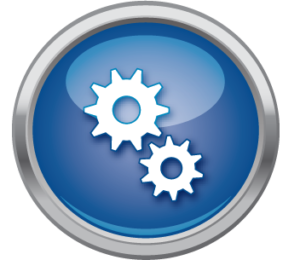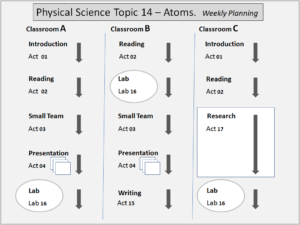< All Activities ………. Next Activity >
Scope, Sequence, Structure, Skill
This page provides suggestions and guidelines for teachers. This page outlines how make use of the topics, activities, techniques, and other resources on this site.
- Each subject lists about 30 topics. (This is the scope of instruction).
- Each subject lists the topics in a numeric order with topic IDs. (This is the topic sequence – TOPICS).
- Each topic can be delivered through a variety of lessons and ways. (Lessons can be delivered in multiple ways, or ACTIVITIES).
- Each lesson-activity requires prerequisite skills by the students. (Student skills can be improved with TECHNIQUES).
SCOPE AND SEQUENCE (of a subject):
- Deliver TOPICS in sequential order. Schedule about one-week of instruction per topic.
STRUCTURE (of a topic):
- Select ACTIVITIES for how best to teach each topic to your students. Select 2-6 activities (or lessons) for each topic.
SKILLS (prerequisites for excellence):
- Deliver TECHNIQUES when students need remediation in an underlying academic skill. Use these only for remediation or deficiency in student skills.
EXAMPLE:
In the illustration here, an instructor teaches physical science. All of the topics in physical science will be delivered (scope) in approximately numeric order (sequence). In this illustration, Topic 14 “Atoms” within physical science will be taught. The instructor selected Activity 02 as one of the ways to teach about atoms. Activity 02 is “Reading Day” where students read about twenty pages from their science textbook. In this instance, the instructor has identified that some students do not yet have skills developed to read complicated text. Technique 10 supports the instructor in improving student skills in reading complicated text. The instructor might choose to teach Technique 10 prior to assigning Activity 02 for Topic 14.
Each science curriculum on this site provides three dozen or so topics relevant to the overall subject area. The “generic” sequence for every topic is a follows:
- Intro. “Day 1” is an introduction to the topic using a student printout or a Honeycutt Science workbook.
- Read. “Day 2” is student reading from a textbook and summarizing information.
- Create. “Day 3” is creation of topic presentations as individuals or small teams of students.
- Present. “Day 4” is presenting the day 3 information to the class.
- Enrich. “Day 5” is broadening or deepening content through labs, models, ELA, or STEM activities.
EVEN SO … any given topic can be taught using a variety of Activity combinations. The generic Day 1 through 5 suggestion is only that – a suggestion. This site makes selecting activities convenient … and keeps students more engaged through variety. Compare classrooms A, B, and C in the illustration below. All three classrooms deliver Topic 14 on atoms. Further, all three include the hands-on lab 16 for constructing atom models. But, only classroom C has a two-day research assignment on atoms. Another difference is that classroom B skips the introduction activity and instead begins with reading from the textbook. While each classroom has activities in common with the other two, the order of delivery is varied and a few of the activities selected are unique to that classroom’s needs.


